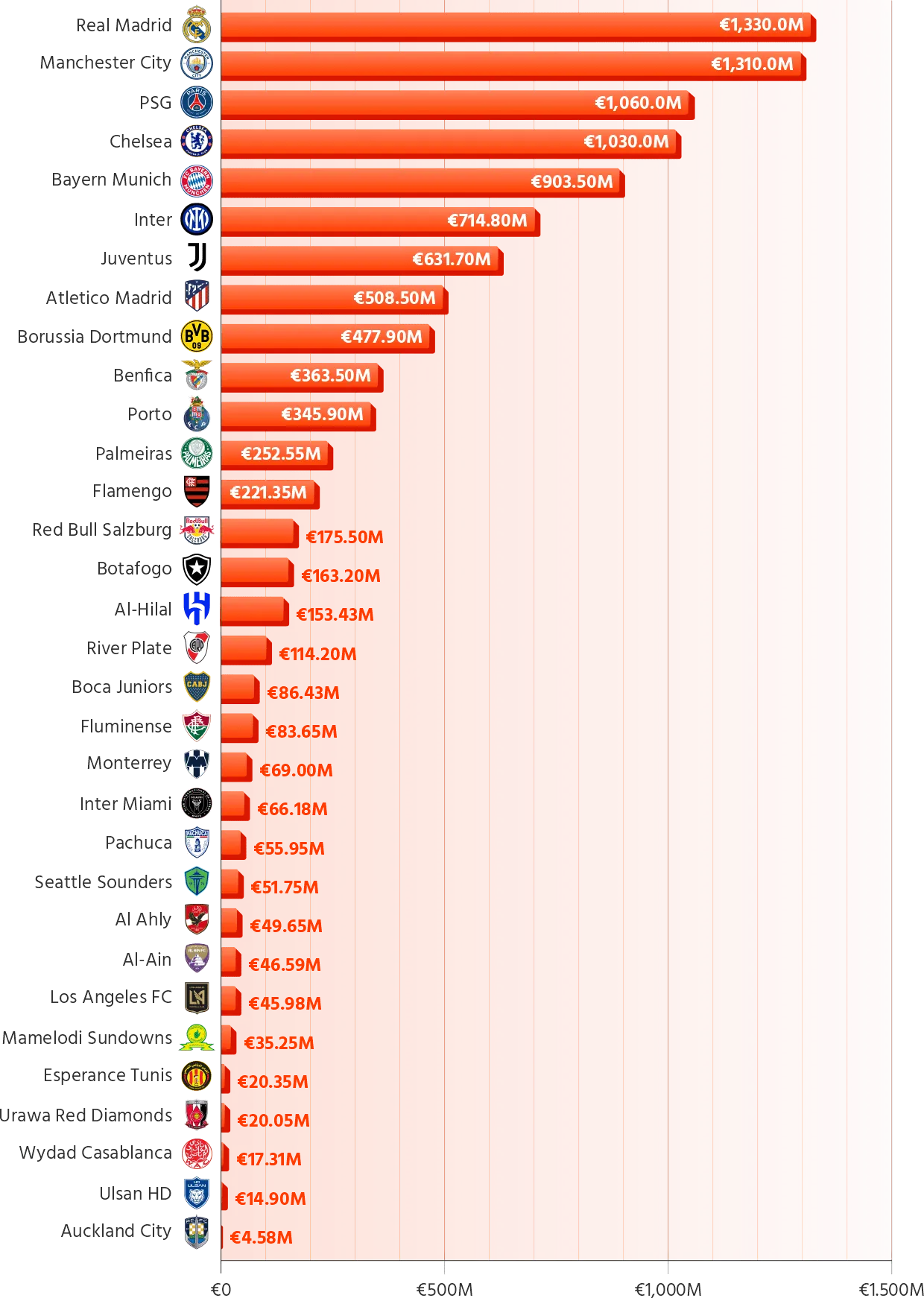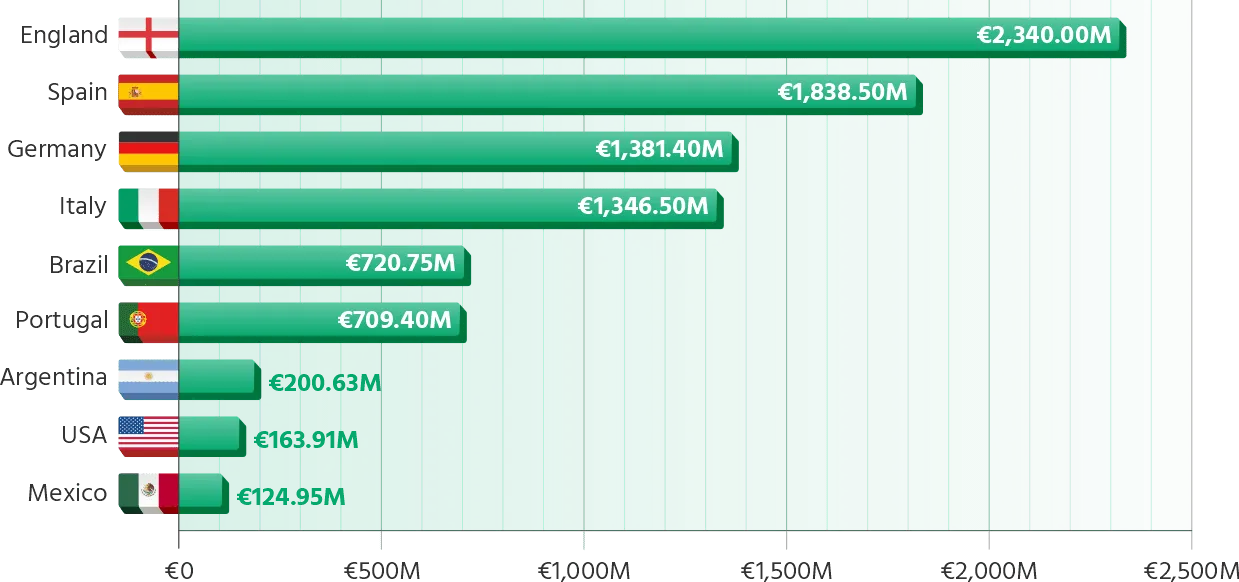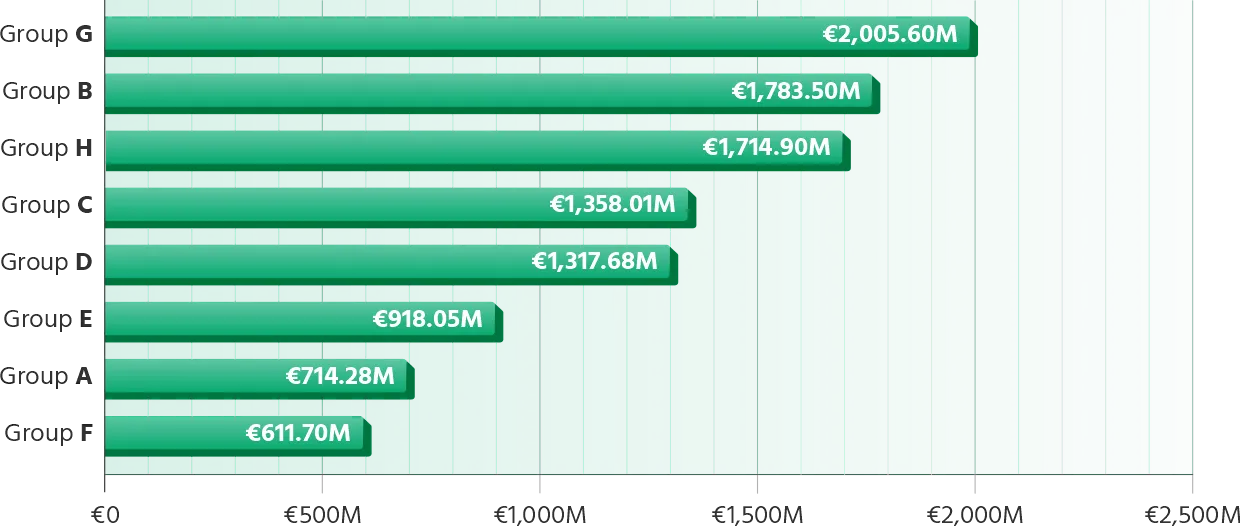The 2025 edition of the FIFA Club World Cup marks a historic expansion to 32 clubs, bringing together teams from all six football confederations. Football’s governing body had allowed an additional transfer window between 1-10 June, so that the participating clubs could strengthen their squads. Manchester City was one of the most active teams during the short-term transfer window, spending over €125 million, adding four new players to its squad. Now, after every participant’s final squad is known, Sportingpedia analysed the teams based on their market values. The analysis shows how the group draw shapes the tournament’s landscape, as some groups have been particularly weaker than others. Additionally, each country which sends more than one representative to the global forum is taken into consideration so as tо assess national strength and depth at club level. From the billion-dollar giants of Europe to emerging powers in South America and Asia, the data highlights disparities in squad valuation, group competitiveness, and geographical representation, offering a unique financial perspective on the first-ever 32-team FIFA Club World Cup.
Club World Cup participants ranked by Market Value


In total, the 32 participating teams hold a combined market value of €10.4 billion. At the top of the list is Real Madrid, whose squad is estimated at €1.33 billion, making them the most expensive side at the tournament. They are followed closely by Manchester City at €1.31 billion, the freshly crowned Champions League winner Paris Saint-Germain at €1.06 billion, and Chelsea at €1.03 billion. The combined market value of these four and the next club in the ranking, Bayern Munich (€903.5 million), exceeds that of the other 27 clubs in the tournament, underlining the divide between European elites and the rest.
Looking more broadly, a total of 17 clubs enter the tournament with squads valued above €100 million. Of those, eight exceed the €500 million mark. Besides the top five, Inter (€714.8 million), Juventus (€631.7 million), and Atletico Madrid (€508.5 million) complete that elite group. At the opposite end of the scale, nine clubs are valued below €50 million: Al Ahly (€49.65M) Al-Ain (€46.59M), Mamelodi Sundowns (€35.25M), Esperance Tunis (€20.35M), Urawa Red Diamonds (€20.05M), Wydad Casablanca (€17.31M), Ulsan (€14.90M), and Auckland City, who enter the competition with a squad worth just €4.58 million.
Combined market values of clubs from countries with multiple participants


A country-level comparison reveals the extent of Europe’s dominance. England will send two teams, Manchester City and Chelsea, whose combined squad value reaches €2,340 million – more than any other nation. Spain follows with Real Madrid and Atletico Madrid totalling €1,838.5 million. Germany’s duo of Bayern Munich and Borussia Dortmund brings in €1,381 million, while Italy’s Inter and Juventus together account for €1,346.5 million. Portugal’s representatives, Benfica and Porto, are not far behind at €709.4 million. Brazil stands out as the most represented country with four clubs – Palmeiras, Flamengo, Botafogo, and Fluminense – whose total value adds up to €720.75 million, placing them just behind Germany and Italy despite sending twice as many teams. Argentina’s River Plate and Boca Juniors contribute a combined €200.63 million, while three clubs from the United States – Inter Miami, Seattle Sounders, and Los Angeles FC – together are worth €163.91 million. Mexico’s Monterrey and Pachuca add €124.95 million between them.
Club World Cup Groups ranked by Combined Market Value


When examining how the 32 clubs were distributed across the eight tournament groups, clear disparities emerge. Group G (Manchester City, Wydad, Al Ain, Juventus) leads the way with a combined value of €2,005.6 million and is the only one to surpass the €2B mark. Group B and Group H hold close estimates of €1,783M and €1,715M respectively. Group C comes next at €1,358M, then Group D at €1,317M. Group E sits just below the billion mark with €918M, while Group A trails further behind at €714M. The lowest-valued group is Group F, with a combined squad worth of €611.7 million – more than three times less than Group G. In fact, the top three groups alone represent over 52% of the total tournament market value.
This imbalance will likely shape the competitive landscape of the group stage. Teams drawn in the top-heavy groups will face much tougher opposition early on, while those in lower-valued groups may see a clearer path to the knockout rounds. One thing is certain: when the world’s top clubs converge, market value offers a clear signal of who the true giants are, and where the underdog stories may emerge.
